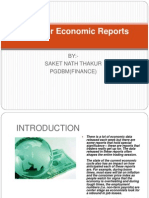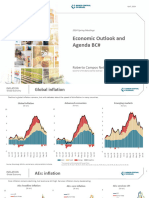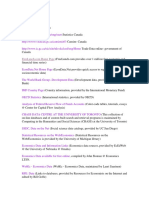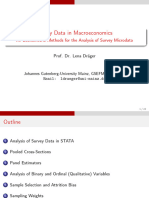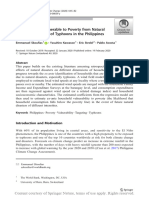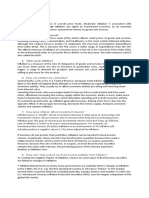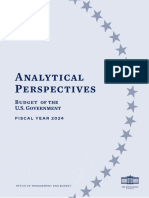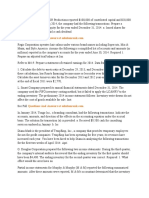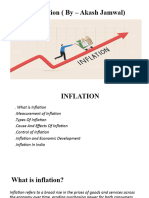0% found this document useful (0 votes)
52 views47 pagesSurveyData 2
The document discusses various survey datasets used in macroeconomics, including those from professional forecasters, households, and firms. It highlights methodological issues such as qualitative versus quantitative questions and the impact of wording on responses. The document also outlines specific surveys and their characteristics, including the Survey of Professional Forecasters and the University of Michigan Survey of Consumers.
Uploaded by
Ana Maria Paca PonceCopyright
© © All Rights Reserved
We take content rights seriously. If you suspect this is your content, claim it here.
Available Formats
Download as PDF, TXT or read online on Scribd
0% found this document useful (0 votes)
52 views47 pagesSurveyData 2
The document discusses various survey datasets used in macroeconomics, including those from professional forecasters, households, and firms. It highlights methodological issues such as qualitative versus quantitative questions and the impact of wording on responses. The document also outlines specific surveys and their characteristics, including the Survey of Professional Forecasters and the University of Michigan Survey of Consumers.
Uploaded by
Ana Maria Paca PonceCopyright
© © All Rights Reserved
We take content rights seriously. If you suspect this is your content, claim it here.
Available Formats
Download as PDF, TXT or read online on Scribd
/ 47






























